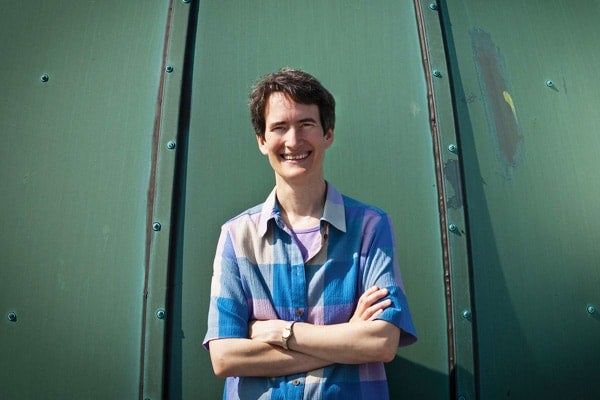
Meet Kim Strong, director of the new School of the Environment
Published: January 15, 2013
Professor Kim Strong, the inaugural director of the new School of the Environment at University of Toronto, is one of the founding members of the Canadian Network for the Detection of Atmospheric Change, a group of researchers working to improve atmospheric remote sounding in Canada.
In 2004, the group obtained funding from the Canada Foundation for Innovation to equip the Polar Environment Atmospheric Research Laboratory (PEARL) at Eureka, Nunavut to provide a long-term data set for studying the evolution of the Arctic atmosphere and its year-to-year variability.
From 1998 to 2006, Strong was principal investigator of the Middle Atmosphere Nitrogen TRend Assessment (MANTRA) project, a large collaboration that used high-altitude instrument-carrying balloons to measure trace gases and investigate the changing chemical balance in the mid-latitude stratosphere. An award-winning teacher renowned for her outreach activities, Strong spoke with writer Kim Luke about her research and her plans for the new School of the Environment at U of T.
What is the vision for the School of the Environment?
The creation of the School of the Environment provides an exciting new opportunity to enhance and expand environmental teaching and research within the Faculty of Arts and Science. I envision the school as a dynamic unit that serves as a nexus for faculty, bringing together scholars from a wide range of disciplines, strengthening existing links, and creating new ways of collaborating and interacting with colleagues. It will also serve as a magnet for students interested in the environment, offering them the best courses and programs in this field available anywhere. Thirdly, the school will be a portal for the wider community beyond the university, providing access to all of the diverse and interdisciplinary environmental scholarship that is underway here. My job is to make all three happen!
Some felt there wasn’t sufficient engagement of scientists in the previous Centre for the Environment. Why is it important to have scientists active in the School?
Why do students and scholars want to study the environment? The answers probably vary widely, but ultimately involve some desire to understand the world we live in and how it will evolve in the future. As a scientist, I think that science provides a framework for that understanding, allowing us to describe Earth and its environment, on both the local and global scales, in quantitative ways.It is important to engage scientists in the school to fully realize the vision described above, connecting them with those involved in environmental studies, giving the new undergraduate environmental science program a solid foundation, and ensuring that their research in this area is visible and gets the recognition it deserves.
What is the first thing you will do when you become director?
There will be many things to do! I think my first priority will be to talk to as many people as possible, both those already actively engaged with the school, and those less so. I want to get a good sense of the current strengths and identify areas for improvement. The school will be making several cross appointments over the next few years, so I would like to find out where the greatest needs are and which departments are interested in such positions. We need to launch the revised undergraduate environmental science program and the revamped environmental studies program, and to decide on how we can best expand the graduate program. We’ll also be developing initiatives to engage faculty and all stakeholders in the school, as well as looking for a new home somewhere on campus. I am honoured and excited to have been given the opportunity to lead the school, and am looking forward to this new challenge.
How has your own background prepared you for this role? (How does the directorship converge with your own research/interests?)
My research interests revolve around remote sounding of the atmosphere using a variety of ground-based, balloon-borne, and satellite instruments. Measurements of atmospheric composition are essential to understanding the causes and consequences of issues such as air quality, stratospheric ozone depletion and recovery, and climate change. The goal of my research is to better understand the chemical and physical processes that are driving atmospheric change.
My research is highly collaborative, bringing together colleagues with complementary expertise to address key scientific questions. However, these topics extend beyond the scientific; they have aspects and impacts that reach into the social sciences and humanities, including such fields as policy, economics, and health. I will bring the same collaborative spirit to the establishment of the new school as a place where many disciplines converge to provide insights into the past, current, and future state of our environment, and to give policy-makers, engineers, industry, and the public the facts they need to make informed decisions about the environment.
Read more about the School of the Environment here.



